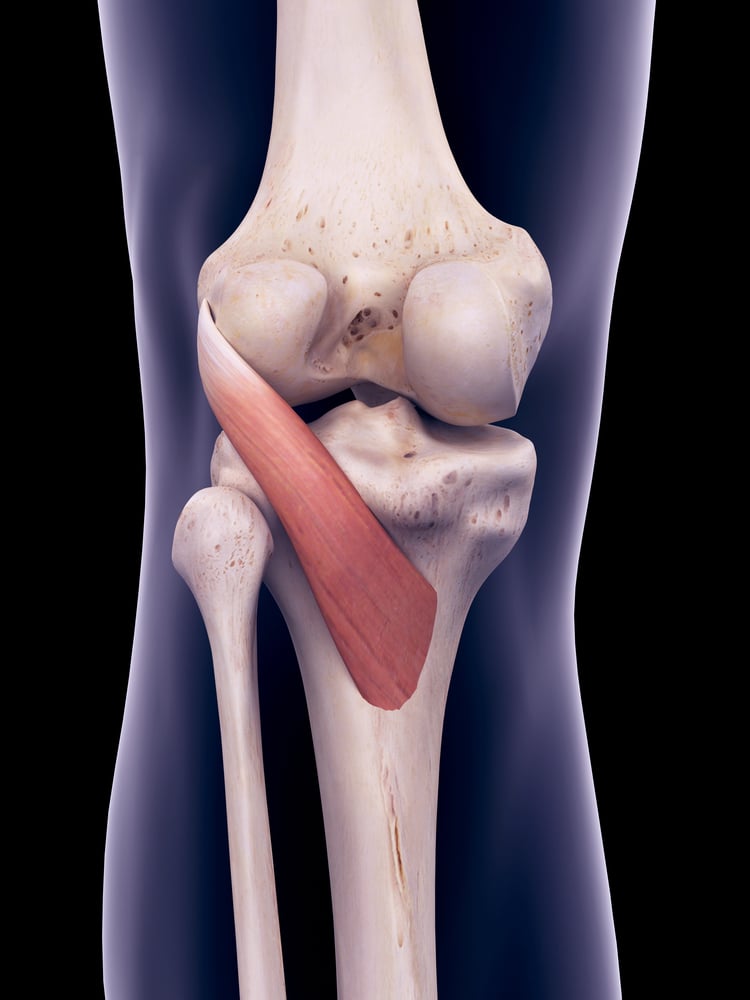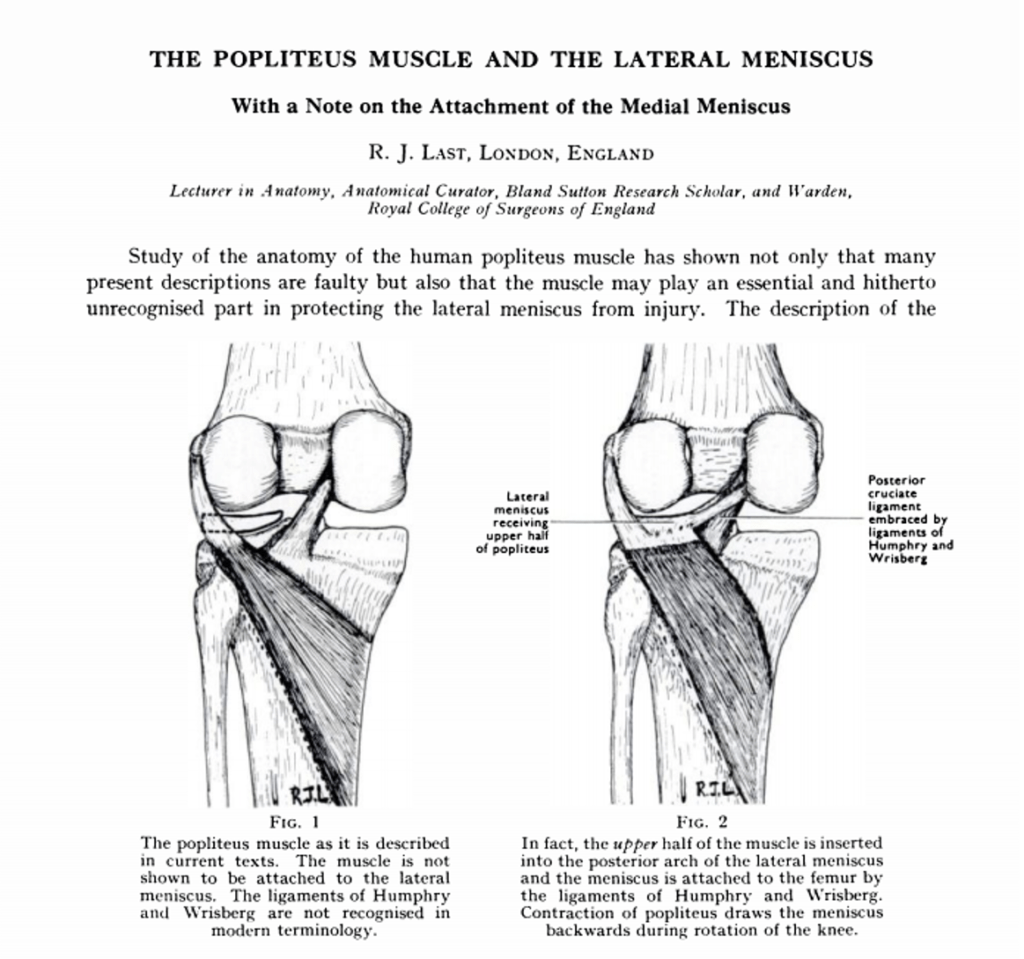The Popliteus Muscle: A Little Muscle with a HUGE Impact

Credit: Shutterstock
I love writing about what I experience on a day-by-day basis. This weekend, I was sitting awhile and went to get up and had lateral knee pain. Misery followed and it took me a day or so to find the culprit. So let’s learn today about the Popliteus muscle, a tiny thing that can screw up a knee very quickly.
My Love/Hate Relationship with Aging
Most people hate aging for obvious reasons. However, for a doctor who helps people recover from musculoskeletal and spine problems, age is a great instructor. When you’re young and learning this stuff, it’s all abstract. As you age, it becomes real and helps you put the finishing touches on a lifelong course in all the different ways that orthopedic tissues can fail.
What Is The Popliteus Muscle?
Your knee has many muscles that act on it and most of them live outside the joint. However, there is one muscle that lives entirely in the back of the knee. It’s called the Popliteus.

Credit: Shutterstock
Notice that the red muscle in the back of the knee starts at the tibia leg bone and travels up and diagonally to the outside of the femur (thigh bone). One tendon of the Popliteus is responsible for rotating the femur on the tibia. However, a second tendon has a different function that’s critical. The other is attached to the lateral meniscus. The action of the muscle is therefore to rotate the knee joint and retract the back part of the lateral meniscus.

Above is the first paper in 1950 that talked about this connection between this muscle and the lateral meniscus (1). Others have found the same thing (2,3).
What Happens If the Popliteus Muscle Fails to Do Its Job?
Now we’re right up to the place in the story where I get up from that chair. I had been noticing tightness in the back and outside of the right knee for weeks. That was likely due to irritated nerves in the back. I then threw out my back on a recent sailing trip, which leads us to my knee event.
What happened when I got up? As I went to extend that knee and turn on that leg, my Popliteus failed to pull the back part of my lateral meniscus out of the way. That meant that the meniscus got crunched, which caused acute pain. That then caused my Popliteus to lock up (go into spasm), which meant I couldn’t straighten that knee because my meniscus couldn’t get out of the way. If your joint is pissed off because you crunched the meniscus and your knee can’t extend, it’s not that easy to walk.
What did I do? When I figured out that the Popliteus was the issue, I began to perform my own deep tissue massage of the muscle. That allowed my knee to extend better because the Popliteus was working a bit better. We’ll see how this is tomorrow, but the next steps, if this doesn’t go away, is to either perform trigger point dry needling of the muscle or inject the tendon and/or meniscus with PRP.
A Chronic Popliteus Problem
A number of years ago, a long-time patient came to me with chronic outside knee pain that was very bad when standing after sitting. For example, if out to dinner, he would have to stand and wait a few minutes before being able to walk. If he didn’t do that, his knee would hurt and he would limp badly.
On exam, ultrasound imaging demonstrated swelling in the Popliteus tendon and pain around the lateral meniscus. On MRI there was a small tear in the lateral meniscus and as a result, a surgeon wanted to perform a partial meniscectomy. Instead, I injected the Popliteus tendons and lateral meniscus with platelet-rich plasma. Within a few weeks, his problem was gone.
The upshot? The Popliteus is a tiny muscle with a BIG job. If it doesn’t work, you may find out how important it is the hard way!
_____________________________________
(1) Last RJ. THE POPLITEUS MUSCLE AND THE LATERAL MENISCUS. The Journal of Bone and Joint Surgery. VOL. 32 B, NO. 1, FEBRUARY 1950
(2) Jones CD, Keene GC, Christie AD. The popliteus as a retractor of the lateral meniscus of the knee. Arthroscopy. 1995 Jun;11(3):270-4. doi: 10.1016/0749-8063(95)90002-0. PMID: 7632301.
(3) Feipel V, Simonnet ML, Rooze M. The proximal attachments of the popliteus muscle: a quantitative study and clinical significance. Surg Radiol Anat. 2003 Apr;25(1):58-63. doi: 10.1007/s00276-002-0093-7. Epub 2003 Apr 3. PMID: 12677465.
If you have questions or comments about this blog post, please email us at [email protected]
NOTE: This blog post provides general information to help the reader better understand regenerative medicine, musculoskeletal health, and related subjects. All content provided in this blog, website, or any linked materials, including text, graphics, images, patient profiles, outcomes, and information, are not intended and should not be considered or used as a substitute for medical advice, diagnosis, or treatment. Please always consult with a professional and certified healthcare provider to discuss if a treatment is right for you.